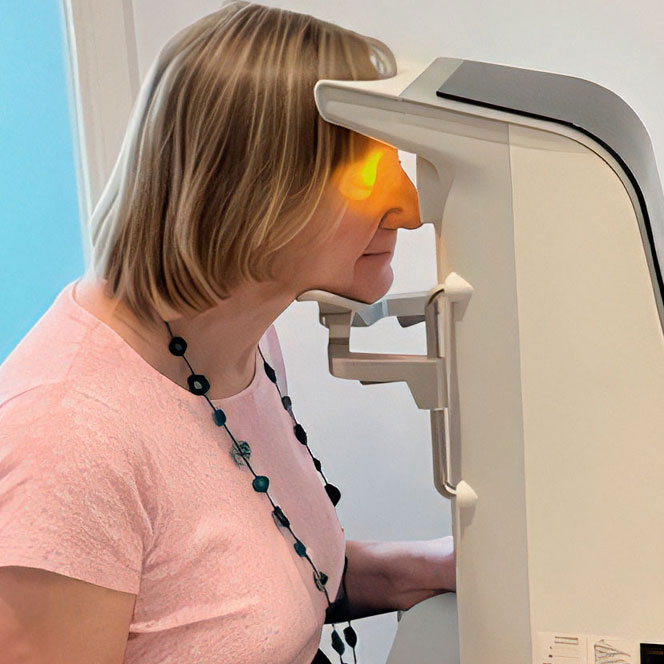
A New Treatment to improve the sight of patients who have Dry Age-Related Macular Degeneration (Dry AMD).
As we age, our sight tends to become less clear, and some of us will develop what is known as “Dry Age-related Macular Degeneration”. When this happens, the central area of our vision darkens and becomes blurred, making it difficult to see detail, and preventing activities such as driving, reading, watching TV, using computers, tablets, and so on. Even recognising faces can prove difficult.
Age-Related Macular Degeneration (AMD) is a leading cause of poor central vision for people in their later years. As populations age, the global presence of AMD was predicted to increase by 20% between 2020 (about 196 million sufferers) and 2030 (243 million sufferers).
The retina is the light-sensitive area at the rear of the eye, and its central part, responsible for visual detail, is known as the macula. In Dry AMD, the macula develops defects which cause blurring and darkening of central vision, making it difficult to see detail, and preventing activities such as driving, reading, watching TV, using computers, tablets, and so on. Even recognising faces can prove difficult.


